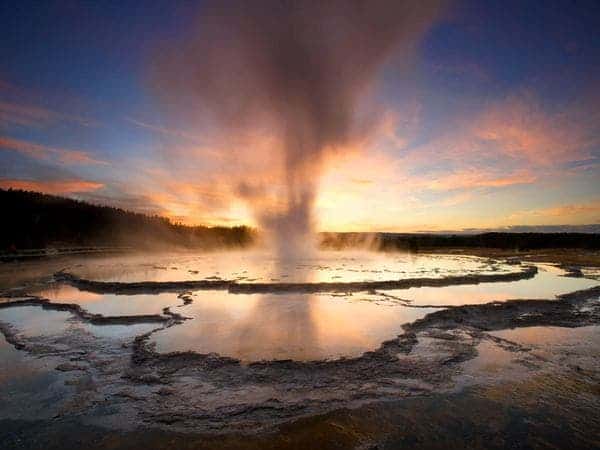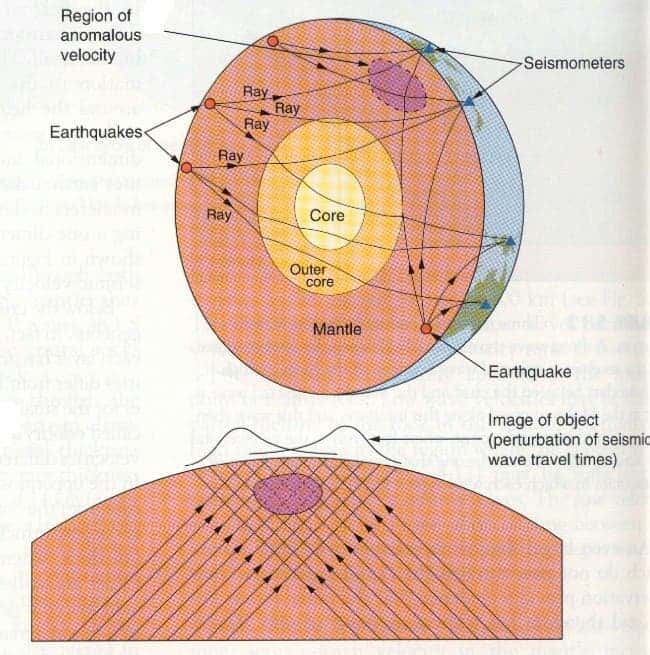Beneath one of the most famous touristic attractions in the world, the Yellowstone National Park, there lies one of the largest and most complex volcanic systems in the world. Yellowstone is a supervolcano of perplexing size, but as Utah seismologists found… it may actually be even bigger than previously thought.
“For the first time, we have imaged the continuous volcanic plumbing system under Yellowstone,” said co-author Hsin-Hua Huang, a post-doctoral researcher in geology and geophysics at the University of Utah. “That includes the upper crustal magma chamber we have seen previously plus a lower crustal magma reservoir that has never been imaged before and that connects the upper chamber to the Yellowstone hotspot plume below.”
A supervolcano is technically defined as any volcano capable of producing a volcanic eruption with an ejecta volume greater than 1,000 km3 (240 cubic miles). Just so you can get an idea, a Yellowstone eruption which took place just over 2 million years ago ejected 2,500 cubic km, while the infamous Mount Helens 1980 eruption only spewed up 0.25 cubic km – 10,000 times less! Needless to say, should Yellowstone erupt, it would be an unprecedented disaster in the history of mankind – a gargantuan event with huge planetary consequences. Naturally, geologists and geophysicists want to understand it as best as possible.
For this reason, several studies have been undertaken, trying to estimate the extent of the caldera through different methods. Now, scientists from the University of Utah have used a technique called seismic tomography to take a better look at the Yellowstone caldera, and they’ve come up with surprising results: according to their calculations, the caldera is 4.4 times larger than previously thought.
The technique they used is not innovative, although it’s relatively new in the geophysical arsenal of study methods. Seismic tomography is an imaging technique that uses seismic waves generated by earthquakes or controlled explosions to create computer-generated, three dimensional images of Earth’s interior. The time it takes for a seismic wave to arrive at a seismic station from an earthquake can be used to calculate the speed along the wave’s ray path. By using arrival times of different seismic waves scientists are able to define slower or faster regions deep in the Earth. There are several material properties which define the wave speed, but under the right circumstances, seismic tomography can reveal deep underground structures – such as the Yellowstone caldera.
“It’s a technique combining local and distant earthquake data better to look at this lower crustal magma reservoir,” Huang says.
According to their results, the reservoir lies 12 to 28 miles (19 to 45 kilometers) beneath the Yellowstone supervolcano and is more than four times bigger than the magma chamber that is already known to exist. However, this doesn’t really means there’s an increased hazard associated with Yellowstone.
“The actual hazard is the same, but now we have a much better understanding of the complete crustal magma system,” says study co-author Robert B. Smith, a research and emeritus professor of geology and geophysics at the University of Utah.
Jamie Farrell, a co-author of the study published online today in the journal Science added:
“The magma chamber and reservoir are not getting any bigger than they have been, it’s just that we can see them better now using new techniques,” Farrell says.











